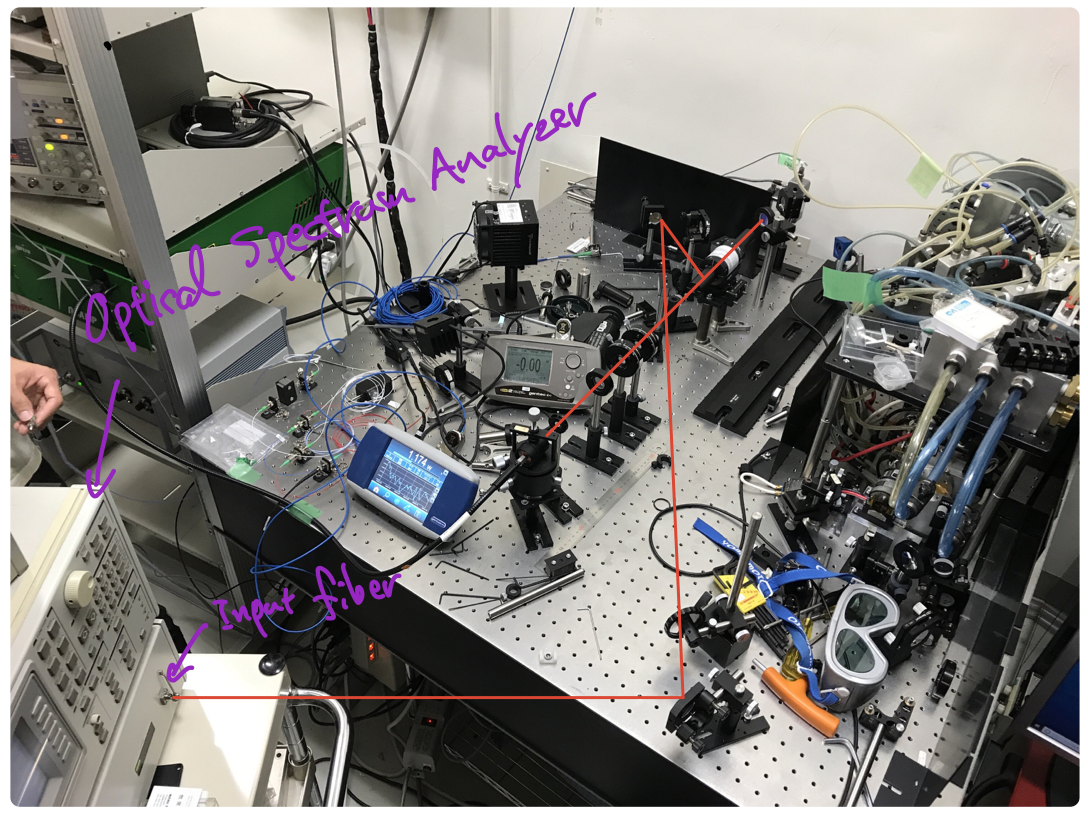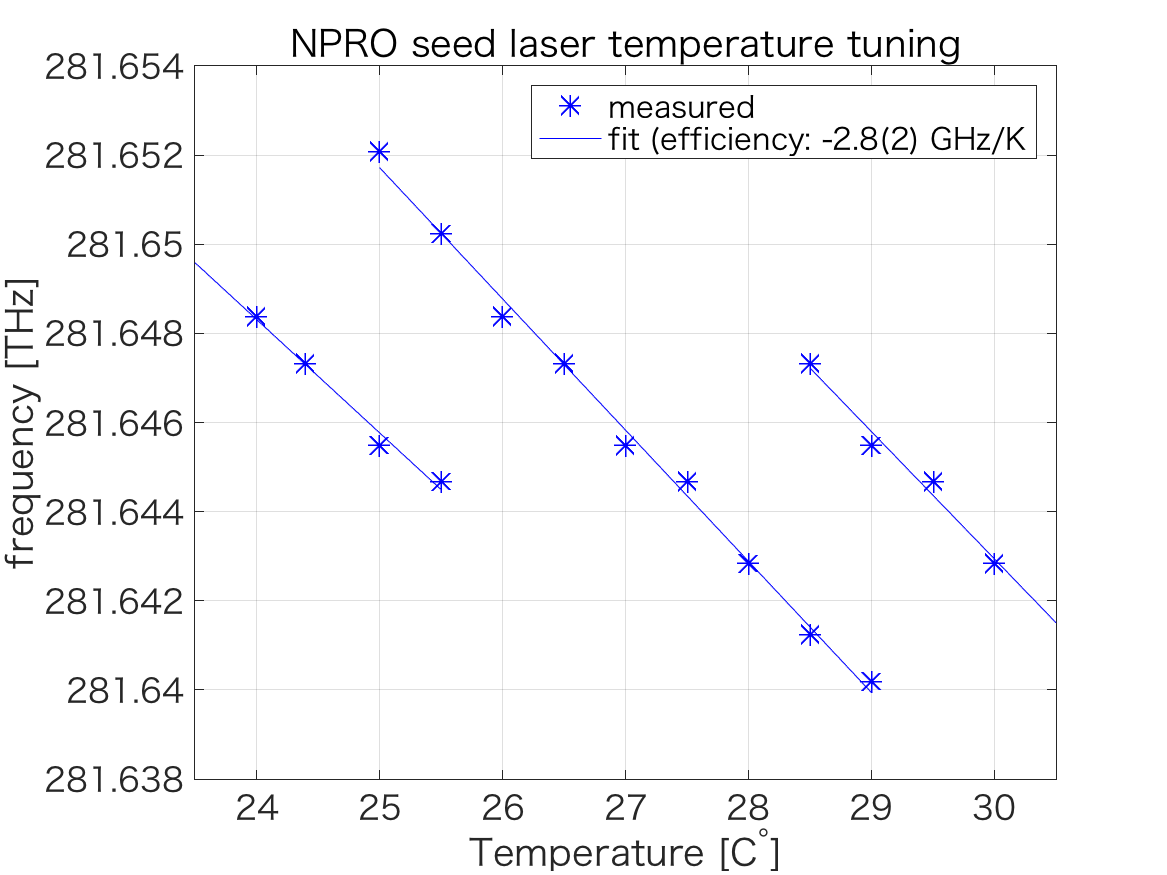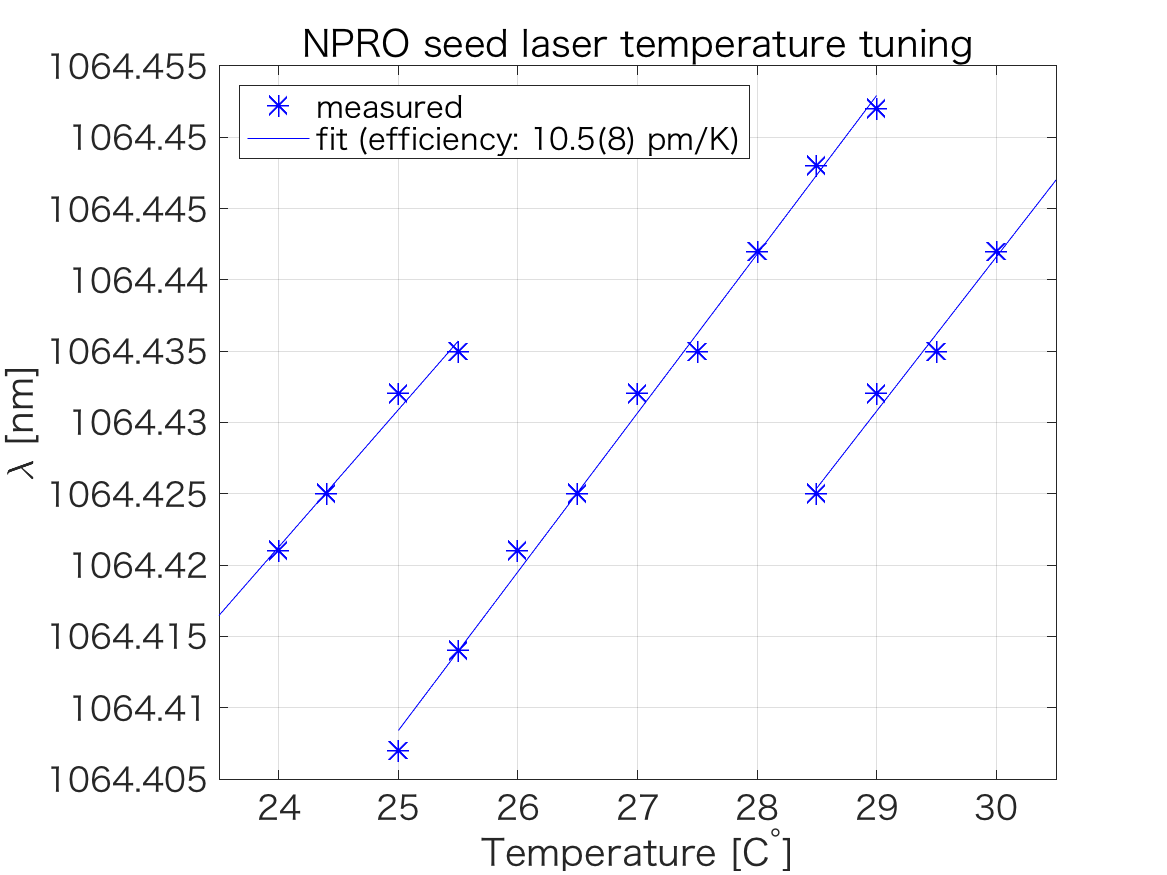[Tahara, Sakakibara, Nakano]
We measured the optical spectrum of the laser by using the optical spectrum analyzer.
==== Motivation ====
We found that the fiber amplifier had 1~2 W output, even when no seed light was injected. We guess it would be the different wavelength light from 1064 nm. Therefore we would like to confirm that the intensity of not-1064-nm light dropped by injecting the seed laser.
The other motivation is to know the mode hop temperature of the NPRO seed laser.
==== Setup of the measurement ====
The setup of the measurement is shown in Fig.1. The laser light was directly injected into the input multi-mode fiber of the analyzer. We used the reflection light from the first polarizer of the FI.
For the NPRO wavelength measurement, we just connected the fiber output from the NPRO to the input of the analyzer after the power reduction and increased the laser temperature by the step of 0.5 degrees from 24 degrees to 30 degrees.
Fig.1 measurement setup
==== Result ====
1. Spectrum of the fiber amplifier
Figure 2 shows the spectrum of the output light from the fiber amplifier (a) when no seed light was injected, (b) when the seed light was injected and the current to the fiber amplifier was 0 A, and when the current was 10 A with the seed laser injected. Figure 1-(a) shows that the light without the seed laser has the broad spectrum with the center wavelength of 1072 nm. Figure 1-(b) and 1-(c) show that broad light disappeared by the seed laser injection.
Fig.2 optical spectrum of the output light from the fiber amplifier.
2. The NPRO frequency and wavelength measurement at each temperature.
Figure 3 shows the NPRO frequency and the wavelength as the function of the NPRO crystal temperature. We can see the mode hop around 25 degrees and around 28.5 degrees. The actuator efficiencies estimated by this measurement are 10.5(8) pm/K in the wavelength and 2.8(2) GHz/K in the frequency. This is the consistent result with that written in the manual (3 GHz/K).







